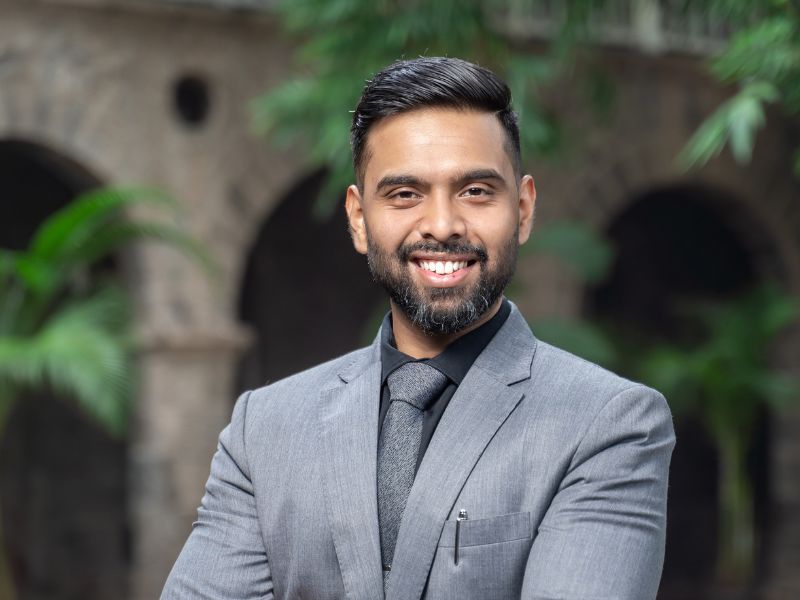Global Pathways: Exploring Medical Education Opportunities for Indian Aspirants
 Kadwin Pillai, Director of Transworld Educare and Chairman of Kings International Medical Academy
Kadwin Pillai, Director of Transworld Educare and Chairman of Kings International Medical Academy
In India, the aspiration to become a doctor is deeply rooted in society, yet the path to achieving this goal is challenging. With limited seats in government medical colleges and high tuition fees in private institutions, many students are exploring medical education opportunities abroad. This shift offers new avenues for those who are determined to pursue their dreams without the constraints of local competition.
In May 2024, the National Testing Agency (NTA) conducted the National Eligibility and Entrance Test (UG), in which more than 24 lakh candidates appeared in 4750 centers in 571 cities throughout the country, including 14 cities outside of India. Over the past few years, an average, 17Lakh students have been writing the NEET Exam, yet only about 9.8 lakh qualify. Despite this, the number of available seats is starkly insufficient, with only about 90,500 seats nationwide. This means that even among those who clear NEET, only about 10% secure a spot in a medical college. This intense competition forces many aspiring doctors to consider studying abroad as a viable alternative.
In the Lok Sabha, Anupriya Patel stated that India’s doctor-to-population ratio reached 1,836, exceeding the World Health Organization’s (WHO) recommended standard of 1:1000. In Australia, roughly four doctors serve every thousand residents, while in Argentina and the United Kingdom, three doctors serve each thousand residents. The United States comes with two doctors per 1,000 people. National Medical Commission (NMC) data indicates that 1,386,136 allopathic doctors were registered in the state medical councils as of July 2024.
The global healthcare landscape is evolving, with an increasing demand for physicians driven by aging populations and the prevalence of chronic diseases. For every 1,000 people in 27 countries, there were 3.56 physicians in 2020. This demand has spurred the establishment of numerous medical schools worldwide, particularly in emerging economies, making foreign medical education an attractive option for students.
Countries such as the Philippines and Nepal, have gained prominence as destinations for Indian students. These countries offer medical programs that are not only affordable but also aligned with international standards, providing students with a comprehensive education that prepares them for global medical practice. Pursuing medical education abroad can be significantly more cost-effective than attending private medical colleges in India. There are approximately 108,915 MBBS seats available across 706 medical colleges in India for NEET 2024. MBBS fees in countries like the Philippines and Nepal range from ₹2.47 lakhs to ₹8.23 lakhs per year, making it a viable option for many families.
Furthermore, medical schools in these countries follow rigorous curricula and offer extensive clinical exposure. Many institutions are recognized by global bodies such as the World Health Organization (WHO), ensuring that graduates receive a quality education that meets international standards. Courses are often conducted in English, which makes it easier for Indian students to adapt and excel, also preparing them for future opportunities in English-speaking countries.
In addition, foreign medical schools are increasingly incorporating global medical trends and technologies in their curriculum. These include the latest advances in medical research, diagnostic equipment and treatment methods. For example, some institutions are integrating artificial intelligence (AI) and machine learning into their clinical training, providing students with a modern approach to patient care. These innovations not only enhance students’ clinical skills but also prepare them to be at the forefront of medical practice. Exposure to diverse healthcare systems and global best practices improves their learning experience even more, allowing them to view medical problems from a broader perspective. This integration of present-day medical practices ensures that graduates are well-equipped to tackle emerging healthcare challenges and contribute effectively in various international settings.
The cultural similarities between India and countries like the Philippines and Nepal help Indian students adjust more comfortably, providing a familiar environment that supports their academic journey. Students gain practical experience in a variety of healthcare settings, which is invaluable for their professional development and future practice. Additionally, the strategic geographic proximity of these countries makes travel more convenient and cost-effective for students and their families.
The Philippines, for instance, is witnessing a significant rise in Indian medical students due to recent legislative changes that allow foreign graduates to practice locally. This development, coupled with the affordable and high-quality education offered, makes it a popular destination.
The pursuit of medical education abroad represents a strategic choice for Indian students seeking quality education at an affordable cost. Countries like the Philippines and Nepal, provide valuable opportunities, allowing students to achieve their dreams in a supportive and culturally aligned environment. As global healthcare needs continue to rise, these pathways offer a promising future for aspiring medical professionals from India.
Also read: Most medical colleges lack faculty, fail attendance requirement: NMC
















Add comment